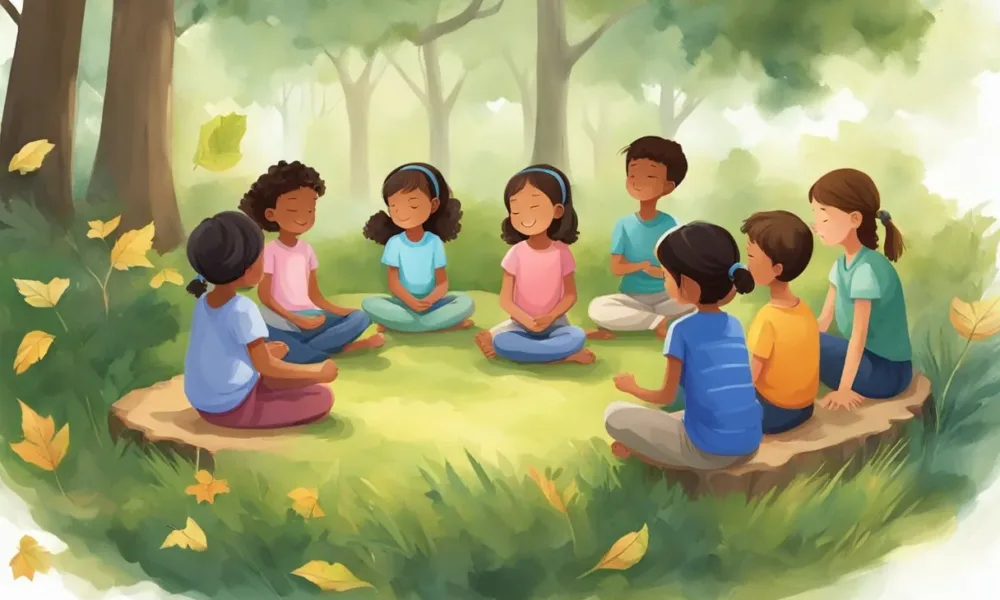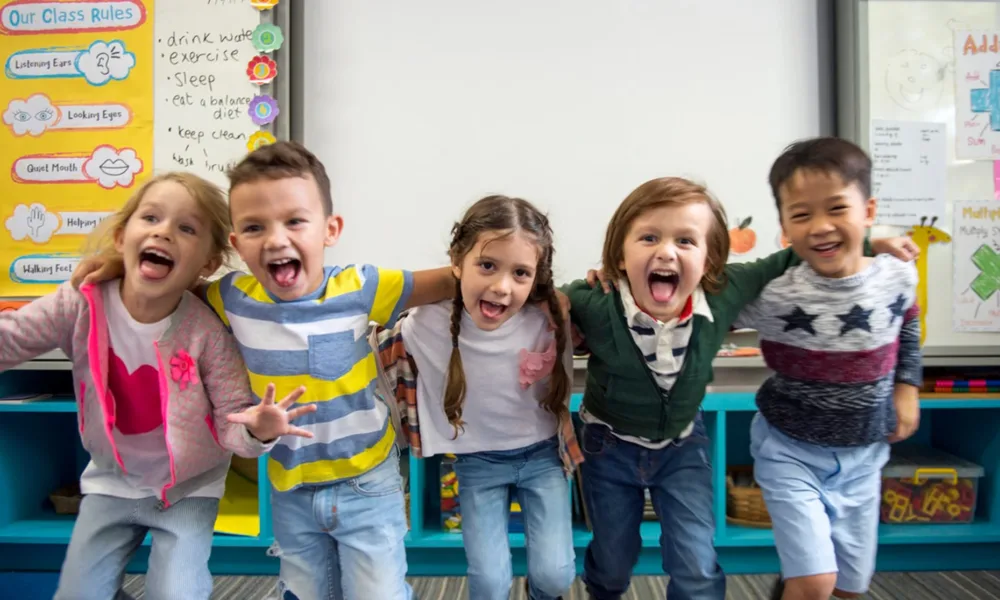In today’s fast-paced world, children are exposed to endless stimuli—from digital devices to academic pressures. These constant demands can lead to stress, anxiety, and difficulty concentrating, even at a young age. Introducing mindfulness to children can help them develop emotional regulation, focus, and self-awareness. But how can we teach these abstract concepts to kids in a way that is engaging, fun, and age-appropriate? The answer lies in play.
Play is not only a child’s natural mode of learning but also a powerful tool to cultivate mindfulness. By embedding mindfulness practices into games and playful activities, children can learn to stay present, observe their emotions, and develop coping strategies—all without feeling like they’re “learning” in the traditional sense.
Table of contents
- What is Mindfulness for Children?
- Why Play is the Perfect Vehicle
- Simple Mindfulness Activities Through Play
- Tips for Integrating Mindfulness in Daily Play
- Benefits of Mindfulness Through Play
- Mindfulness in School Settings
- Addressing Challenges
- The Role of Parents and Caregivers
- Real-Life Examples
- Long-Term Impact
- Conclusion
What is Mindfulness for Children?
Mindfulness is the practice of paying attention to the present moment with curiosity and non-judgment. For adults, it might involve meditation or deep breathing, but for children, it can be simplified into playful, interactive experiences.
When children practice mindfulness, they learn to:
- Notice their thoughts and feelings without being overwhelmed
- Focus on a single task or experience at a time
- Respond to challenges calmly rather than reacting impulsively
- Cultivate empathy and understanding for others
By incorporating mindfulness into play, these skills can develop naturally, helping children thrive emotionally, socially, and academically.
Why Play is the Perfect Vehicle
Play is central to a child’s development. Through play, children explore their world, express emotions, solve problems, and interact socially. Combining mindfulness with play provides several benefits:
- Engagement: Children are more likely to participate in mindfulness activities when they are fun and interactive.
- Retention: Learning through play helps children internalize mindfulness concepts more effectively than formal instruction.
- Creativity: Play encourages imaginative thinking, which enhances the ability to approach challenges mindfully.
- Emotional Expression: Games allow children to recognize and express feelings in a safe, structured way.
In essence, mindfulness through play feels natural rather than forced, which is key to building lasting habits.
Simple Mindfulness Activities Through Play
Here are some practical ways to teach mindfulness to children through playful activities:

1. Mindful Breathing Games
- Belly Breathing with Stuffed Animals: Have the child lie down and place a stuffed animal on their belly. Ask them to watch the animal rise and fall as they breathe deeply.
- Blowing Bubbles: Children blow bubbles slowly, paying attention to their breath and the movement of the bubbles. This activity encourages slow, intentional breathing.
2. Sensory Mindfulness Activities
- Nature Exploration: Take a walk outdoors and encourage children to notice the sights, sounds, and smells around them. Ask questions like, “What can you hear right now?” or “Can you find something soft, rough, or shiny?”
- Mindful Eating: Offer a small snack and guide children to explore its texture, taste, and smell before eating. This helps cultivate awareness and patience.
3. Body Awareness Games
- Freeze Dance: Play music and have children dance freely. When the music stops, they freeze and pay attention to how their body feels.
- Yoga Animal Poses: Teach simple yoga poses inspired by animals, encouraging children to notice how their muscles stretch and their balance shifts.
4. Emotional Awareness Games
- Feelings Charades: Children act out emotions while others guess, helping them recognize and label feelings.
- Mood Meter Activity: Use a color-coded chart representing emotions. Children pick the color that matches how they feel and talk about it briefly.
5. Imagination and Storytelling
- Mindful Story Time: Read a story slowly, pausing to ask children to notice sounds, movements, or emotions of the characters.
- Mindfulness Jar: Create a glitter jar where children shake it and watch the glitter settle, focusing their attention on the present moment.
Tips for Integrating Mindfulness in Daily Play
- Keep it Short: Young children have limited attention spans. Mindfulness activities can be as short as 1–5 minutes.
- Model Mindfulness: Children learn by observing adults. Practicing mindfulness yourself sets a powerful example.
- Use Positive Reinforcement: Celebrate small successes, like focusing attention or naming a feeling.
- Make it Consistent: Integrate mindfulness play into daily routines, such as before bedtime or after school.
- Be Flexible: Allow children to guide the activity and adapt it according to their interest and energy level.
Benefits of Mindfulness Through Play
When practiced regularly, mindfulness through play can bring a wide range of benefits to children:
- Improved Focus and Attention: Mindfulness helps children stay present and reduces distractibility.
- Better Emotional Regulation: Children learn to recognize their feelings and respond calmly rather than react impulsively.
- Reduced Stress and Anxiety: Playful mindfulness creates a safe space for children to release tension and relax.
- Enhanced Empathy and Social Skills: Mindfulness encourages awareness of others’ emotions and perspectives.
- Increased Self-Awareness: Children gain a better understanding of themselves and their reactions.
Research indicates that children who practice mindfulness show improvements in cognitive function, emotional well-being, and even academic performance. Playful mindfulness is especially effective because it combines skill-building with enjoyment.
Mindfulness in School Settings
Many schools are recognizing the benefits of mindfulness for children and incorporating it into classrooms. Teachers use short breathing exercises, mindful movement breaks, and guided imagery sessions to help students manage stress and improve focus.

Play-based mindfulness in schools encourages collaboration, reduces classroom conflict, and creates a positive learning environment. Activities like “mindful circle time” or “yoga breaks” provide students with tools to handle challenges both academically and socially.
Addressing Challenges
While mindfulness through play is highly effective, some challenges may arise:
- Initial Resistance: Some children may be skeptical or unwilling to participate. Starting with fun, active games can ease them in.
- Short Attention Spans: Activities should be brief and dynamic to maintain engagement.
- Consistency: Parents and educators must integrate mindfulness regularly, even if in small doses, to see long-term benefits.
With patience and creativity, these challenges can be overcome, and mindfulness can become a natural part of children’s daily routines.
The Role of Parents and Caregivers
Parents and caregivers play a pivotal role in teaching mindfulness. By participating in activities, creating a calm environment, and modeling mindful behavior, adults reinforce the practice.
Some strategies for parents include:
- Practicing family mindfulness moments, like a short breathing session before meals.
- Using everyday routines as mindfulness opportunities, such as mindful handwashing or walking.
- Encouraging children to talk about their feelings and experiences without judgment.
By making mindfulness playful and accessible, parents help children develop life-long skills in emotional regulation, self-awareness, and empathy.
Real-Life Examples
Many families and educators worldwide have successfully implemented mindfulness through play:
- In a Montessori school in the U.S., children use a “calm corner” with sensory toys and mindful breathing exercises, helping them self-regulate after stressful moments.
- In Japan, classrooms incorporate daily 3-minute breathing exercises, followed by a discussion about how students feel, promoting focus and emotional awareness.
- Parents in Canada use “mindful nature walks,” allowing children to explore and observe the natural world, cultivating attention and curiosity.
These examples highlight that mindfulness through play can be adapted to various cultures, environments, and age groups.
Long-Term Impact
Introducing mindfulness through play at a young age sets children up for long-term emotional and cognitive benefits. Studies show that children who practice mindfulness are more resilient, better able to cope with stress, and have higher levels of empathy and compassion.
By fostering mindfulness early, we equip children with skills that can improve their relationships, academic performance, and mental well-being throughout life. The combination of play and mindfulness ensures these practices are enjoyable, memorable, and sustainable.
Conclusion
Teaching children mindfulness through play is a powerful approach that merges the natural joy of childhood with the benefits of present-moment awareness. From breathing games to sensory activities, storytelling, and yoga-inspired movements, children can develop emotional regulation, focus, and self-awareness—all while having fun.
Parents, educators, and caregivers have the opportunity to create environments where mindfulness is a playful, integral part of daily life. As children learn to navigate their thoughts and emotions through play, they gain tools that will serve them for a lifetime, fostering resilience, empathy, and emotional intelligence.
In a world full of distractions and stress, play-based mindfulness offers a gentle, effective, and joyful path for children to learn, grow, and thrive. 🌟
